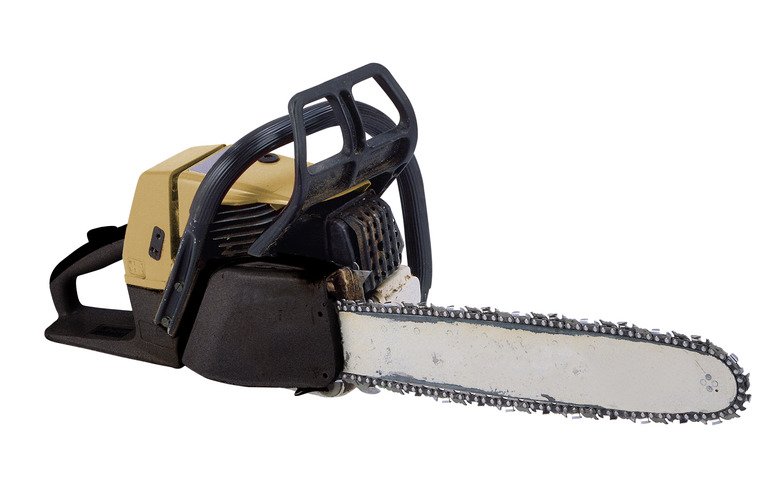Compression Tricks For Chainsaws
A two-stroke gas-powered chainsaw uses relatively few moving parts. However, these moving parts, to stay moving, require a substantial amount of compression. A chainsaw engine generates this compression through the explosion of the fuel in the combustion chamber and the movement of the crankcase. This explosion and movement of the crankshaft causes the engine to come under a vacuum pressure, or compression.
Check the Starter
An increase or decrease in compression can cause a wide range of problems, from minor power decreases to a full shutdown of the entire engine. So it is necessary to rule out other engine areas before compression can be ruled as the source of the problem. The starter, which contains the starter rope, pulley, recoil spring and flywheel, need to spin properly to generate compression. Unscrew and remove the starter assembly from the side of the chainsaw, disassemble the starter parts and check them thoroughly for damage.
- A two-stroke gas-powered chainsaw uses relatively few moving parts.
- This explosion and movement of the crankshaft causes the engine to come under a vacuum pressure, or compression.
Quick Compression Test
After checking the function of the starter assembly, the operator can move on to determining if compression is dropping or increasing. A quick compression test will help determine, again, if the source is actually compression or something else entirely. Set the chainsaw on the ground. Lift the chainsaw up off the ground by the starter rope handle. If the rope pulls out slowly, compression is probably low, as the compression should keep the rope tight.
Checking Compression Levels
If the operator suspects low compression, a further, more specific test needs to be performed to determine if compression is getting lost. A compression gauge works much like a tire gauge, reading the pressure inside the engine. The compression gauge hooks up to the cylinder via the spark plug hole. Pull on the starter rope until the compression reading maxes out. Most chainsaws will operate well with compression readings that range from 100 to 160 psi.
- After checking the function of the starter assembly, the operator can move on to determining if compression is dropping or increasing.
- A quick compression test will help determine, again, if the source is actually compression or something else entirely.
Compression Repair
The operator needs to accurately tell if compression is causing the problems, as compression repairs can be difficult. Problems with the compression usually occur due to an air leak somewhere inside the internal engine, generally around the gaskets and seals of the crankshaft. If these parts are cracked or broken, the entire engine will need disassembling before the problem will get resolved. Take the chainsaw to a professional if you're in doubt about making these repairs at home, as improper repairs can ruin an engine.
